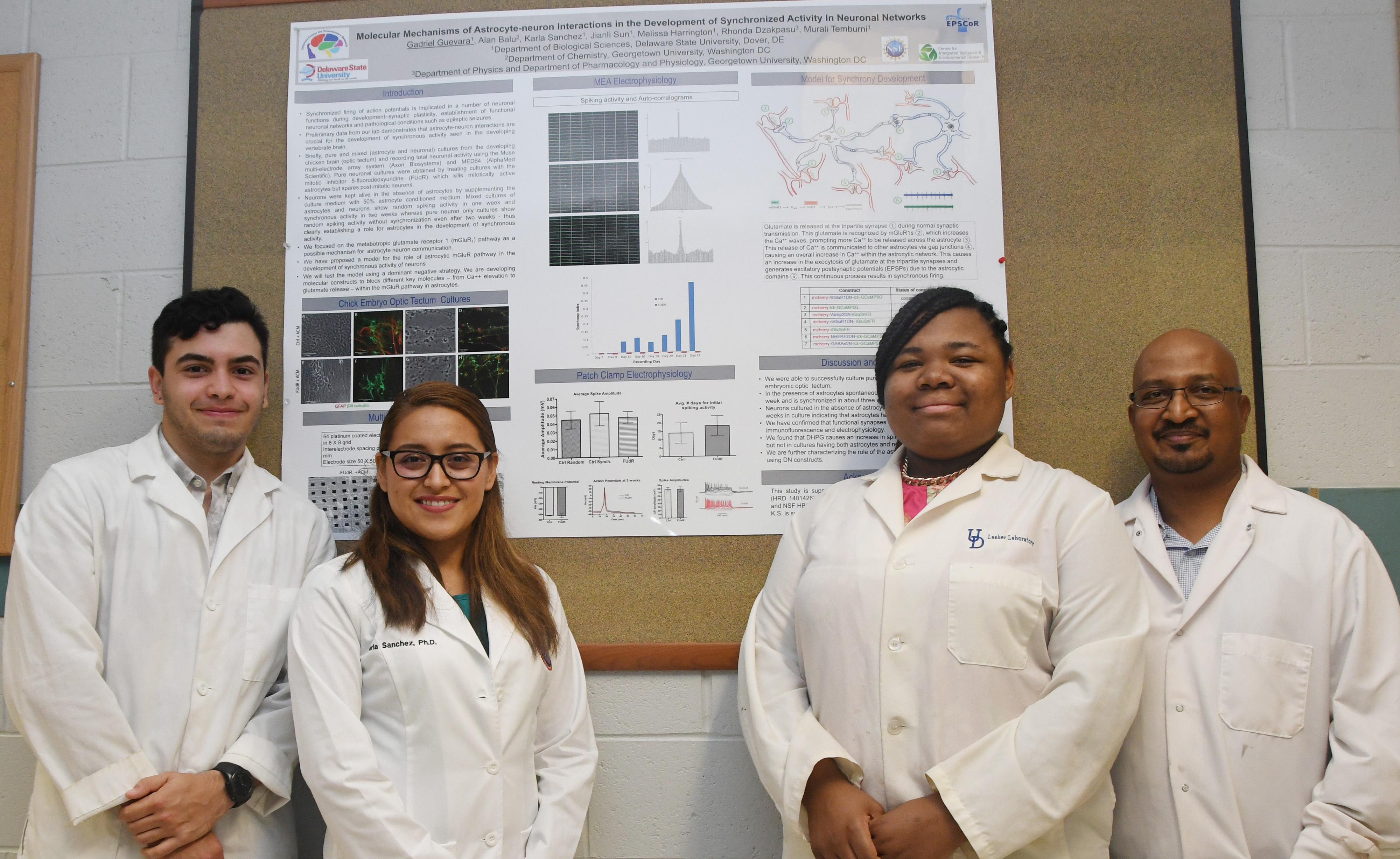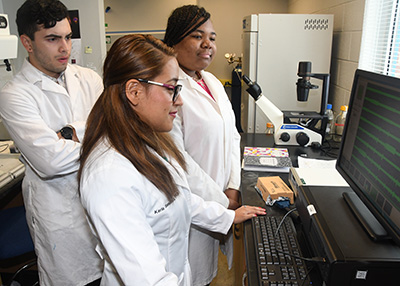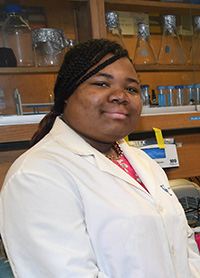
New NSF Grant Funds Research; ECHS grad on the team
 The National Science Foundation (NSF) has awarded DSU a three-year, $723,285 research grant to study the relationship between the role of a particular glial cell and the development of synchronous activity in the brain.
The National Science Foundation (NSF) has awarded DSU a three-year, $723,285 research grant to study the relationship between the role of a particular glial cell and the development of synchronous activity in the brain.
In addition to accessing DSU’s ever-expanding neuroscience research capabilities and expertise, the project also shines an impressive light on the connection between DSU and its Early College High School.
Dr. Murali Temburni, associate professor of biological sciences, is principal investigator of the grant. His research team – which includes undergraduate and graduate science students – will collaborate on the project with a research team headed by Dr. Rhonda Dzakpasu at Georgetown University.
The NSF has awarded Georgetown University another $200,000 for its collaborative part in the project.
The research will test the project’s central hypothesis that a type of glial cell – called astrocyte – plays a central role in the synchronization of neurons in the brain.
In this research, the molecular pathways within astrocytes will be dissected, and the results obtained will define fundamental mechanisms of astrocyte-neurons interactions that shape synchronous activity during brain development.
The communication of nerve cell or neurons with each other takes place through “spikes,” which in deep sleep become synchronized between various regions of the brain, and are thought to be necessary for the development and maintenance of the functional organization of the brain. In pathological conditions like epileptic seizures, this synchronization occurs even when the brain is awake. Currently there is no treatment for epilepsy, and understanding the basic mechanisms that cause neuronal synchronization is necessary for developing treatments.
The technical title of the project is “Collaborative Research: Molecular Mechanisms of Astrocyte Neuron Interactions in the Development of Synchronous Activity in Neuronal Networks.”
Dr. Temburni’s research team for the project consists of Karla Sanchez, a 5th year neuroscience Ph.D. candidate; and two undergraduate students, Gadriel Guevara and Destiny King, both junior biological science majors.
Ms. King is part of the first-ever graduating class of students DSU’s Early College High School in May 2018. Ms. King was able to enroll at DSU as a junior after earning 64 college credit hours while at the ECHS, where she was a member of the inaugural freshman high school class in 2014.
Ms. King was first introduced to Dr. Temburni’s lab as a high school researcher from the ECHS, when she and two fellow students were selected to be part of a NSF HBCU-UP Research Initiation program. The high school trio worked alongside the undergraduate and graduate researchers in the lab.
Dr. Temburni said that Ms. King has been a mainstay in the lab ever since. “She was an excellent student and did better than most undergrads in college classes,” he said. “She often would bring her other high school classmates to the lab and explain the project and the experiments to them.”
After graduating high school this past spring, Ms. King decided to join the lab and continue her involvement in research. For the summer, she was accepted into the Summer Undergraduate Neuroscience Research (SUN-R) program, which is funded by the National Institute of Neurological Disorders and Stroke (under the National Institutes of Health). Fifteen undergraduate students from across the state were recruited into the 10-week program and placed in various neuroscience labs around Delaware to do research. The students also attended the training sessions conducted by DSU neuroscience faculty throughout the program period.
At the end, the students presented posters at the DSU Summer Symposium. Ms. King and her teammate, Taylor Delaney, won second prize in the neuroscience category for their poster entitled “Expression of a Dominant Negative Construct of the Metabotropic Glutamate Receptor in Chick Embryonic Astrocytes in Culture.”
Dr. Temburni said that Ms. King will continue to work in his lab in the upcoming fall and spring semesters.

